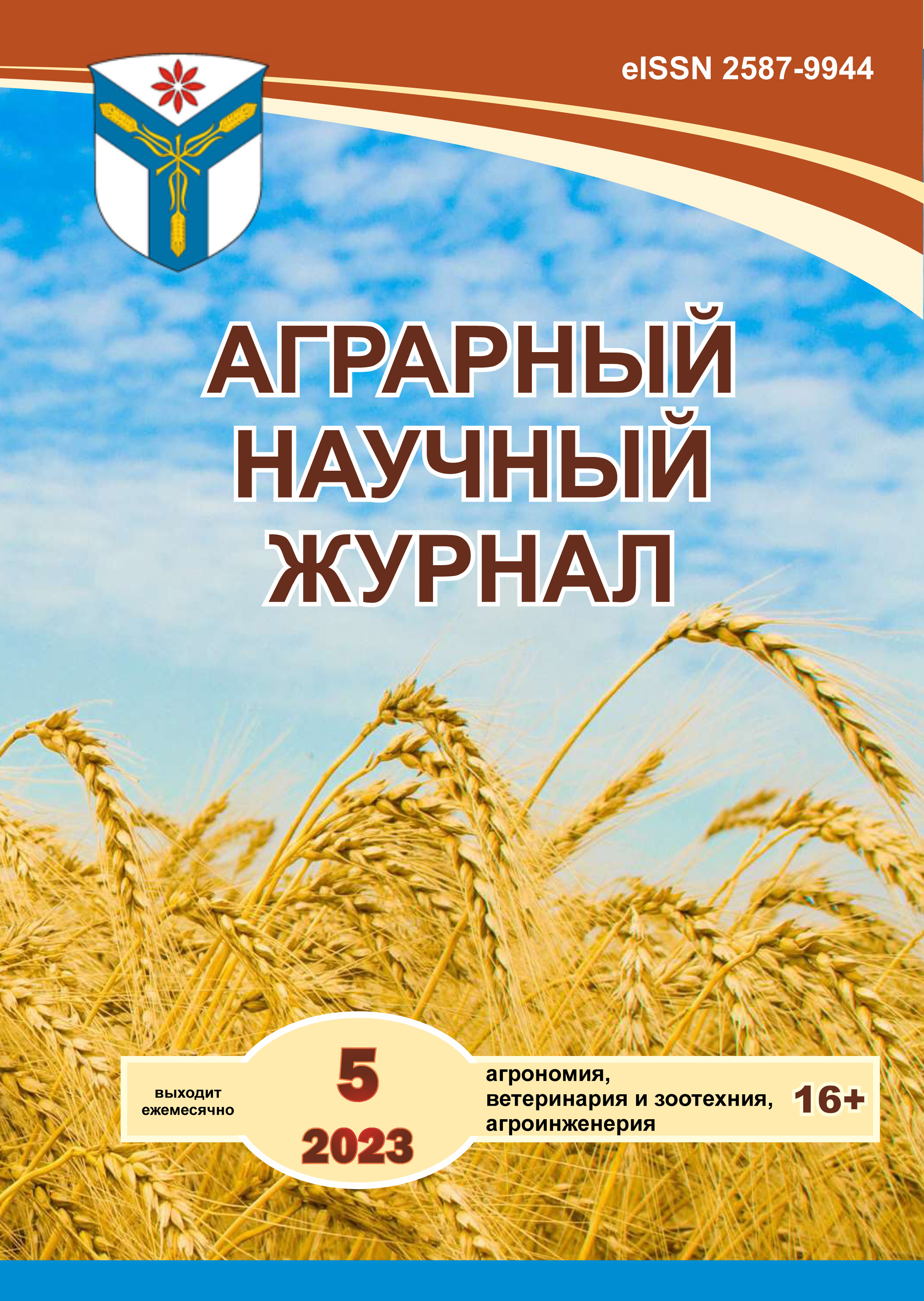Genetic characteristics cows of Brown Swiss breed depending on the reasons for culling from the herd
DOI:
https://doi.org/10.28983/asj.y2023i5pp79-84Keywords:
cattle, productive longevity, retirement, genetic marker, alleles, genotypeAbstract
The productive longevity of cows has an impact on the economics of milk production. Currently, there is a decrease in the culling age of cows, which negatively affects the payback of funds spent on their cultivation. Premature culling is influenced by paratypical and genetic factors. The aim of our research was to study the genetic characteristics of dairy cows that were dropped out of the herd for various reasons at a young age, using marker genes of the EAB locus of blood groups. The cows of the Brown Swiss breed on Smolensk-type numbering 766 heads in 2001-2021, culled at the age of 9 years and younger, who were divided into groups for reasons for culling studies were conducted. The animals in winter are keep confined, in summer are keep camp-pasture. Blood groups of animals were determined using their own standardized reagents, genotypes were established by family analysis. The main reasons for the culling were: low milk productivity (21.41%), diseases of the reproductive organs (19.59%), udder diseases (14.49%), difficult calf birth and complications (8.88%), yeldness (7.70%), leg diseases (7.31%). In total 58 EAB alleles in 766 cows were found, but in groups, depending on the reasons for culling, their number was 27-40. Significant genetic similarity (r > 0,8) was found between groups of animals that were eliminated for various reasons, but differences were found in the frequency of occurrence of individual EAB alleles that were statistically significant for markers: G3O1T1Y2E`3F`2, b, G1O`, B1O3Y2A`1E`3G'P'Q'Y`. The most specific markers of the EAB locus for each group of animals were determined, depending on the reasons for culling.
Downloads
References
Дмитриев В. И., Кольцов Д. Н., Гонтов М. Е., Багиров В. А. Племенная ценность быков-производителей при оценке их дочерей по продуктивному долголетию // Достижения науки и техники АПК. 2020. Т. 34. № 11. С. 88–92.
Гонтов М. Е., Кольцов Д. Н. Генетический фактор в продуктивном долголетии коров // Аграрный научный журнал. 2021. № 5. С. 54–59.
Генетический контроль селекционных процессов в популяции бурого швицкого скота с использованием маркерных генов групп крови / М. Е. Гонтов [и др.] // Молочное и мясное скотоводство. 2016. № 4. С.17–20.
Животовский Л. А., Машуров А. М. Методические рекомендации по статистическому анализу иммуногенетических данных для использования в селекции животных. Дубровицы, 1974. 30 с.
Зырянова С. В., Тамарова Р. В. Оценка по продуктивному долголетию дочерей быков михайловского типа // Повышение уровня и качества биогенного потенциала в животноводстве: сб. ст. Ярославль, 2017. С. 62–70.
Калиевская Г. Влияние некоторых причин на продуктивное долголетие коров // Молочное и мясное скотоводство. 2002. № 5. С. 25–29.
Кондратюк Е. А. Оценка продолжительности жизни молочных коров с использованием эритроцитарных антигенов В-системы групп крови // Вестник Российской сельскохозяйственной науки. 2019. № 5. С. 69–72.
Сороковой П. Ф. Методические рекомендации по исследованию групп крови в селекции крупного рогатого скота. Дубровицы, 1974. 40 с.
Сырцева Е. М. Наследственная предрасположенность черно-пестрых коров к причинам выбраковки // Биология в сельском хозяйстве.
№ 1. С. 19–23.
Тихомиров И. А., Скоркин В. К., Аксенова В. П., Андрюхина О. Л. Продуктивное долголетие коров и анализ причин их выбытия // Вестник Всероссийского научно-исследовательского института механизации животноводства. 2016. № 1(21). С. 64–72.
Чеченихина О. С. Влияние быков-производителей на продуктивное долголетие дочерей // Аграрный научный журнал. 2014. № 11. С. 42–46.
Downloads
Published
Issue
Section
License
Copyright (c) 2023 The Agrarian Scientific Journal

This work is licensed under a Creative Commons Attribution-NonCommercial-NoDerivatives 4.0 International License.








